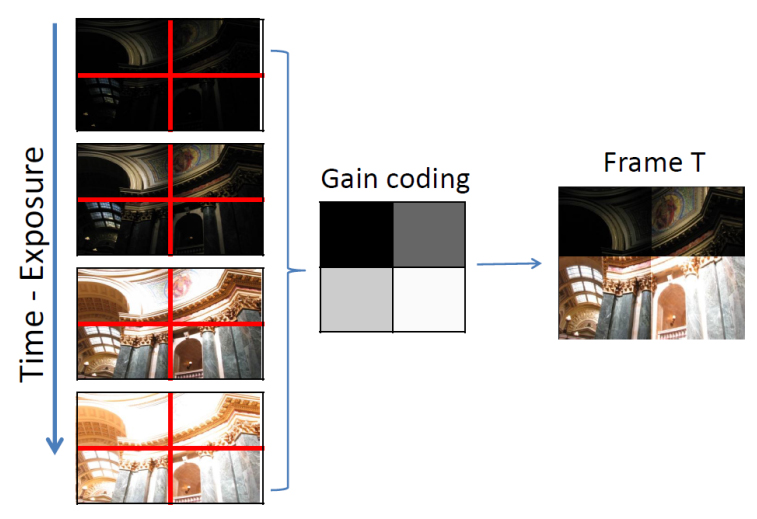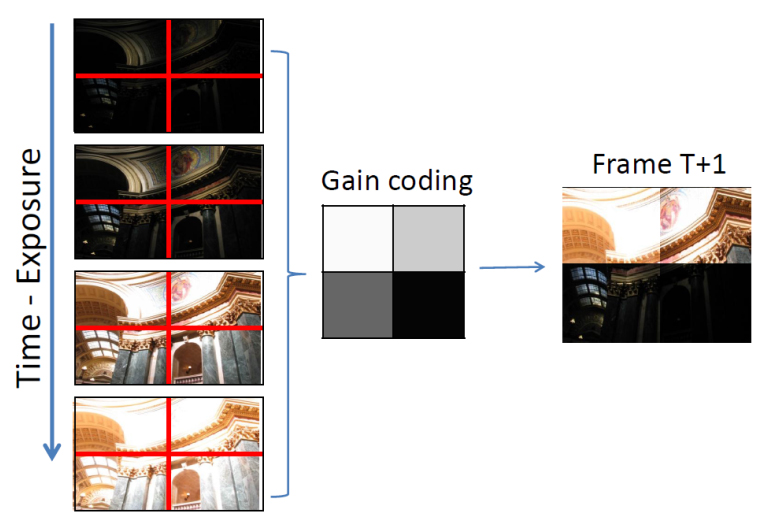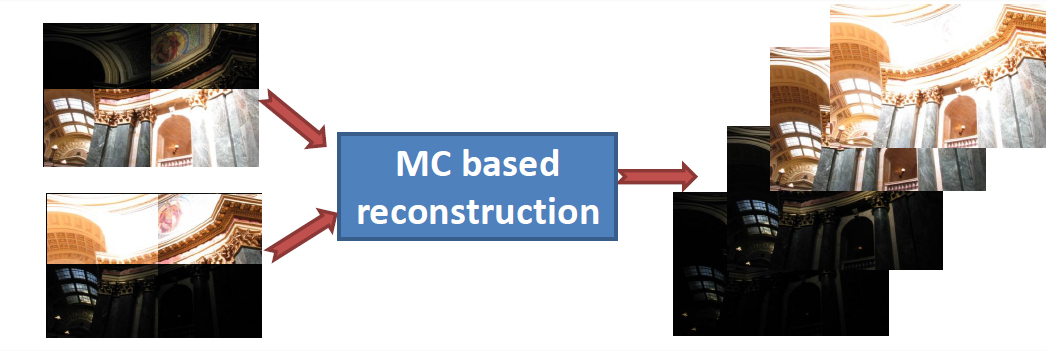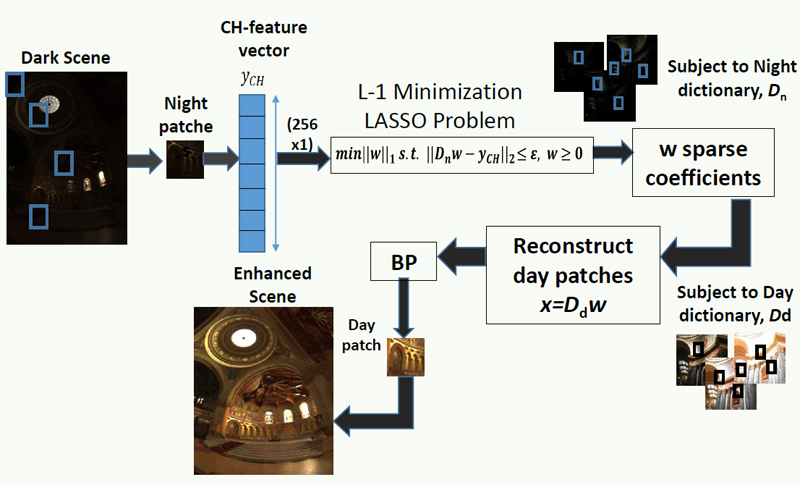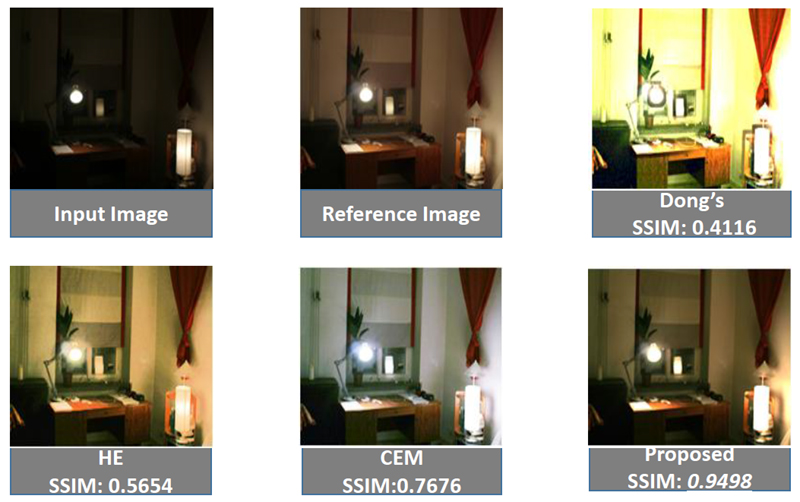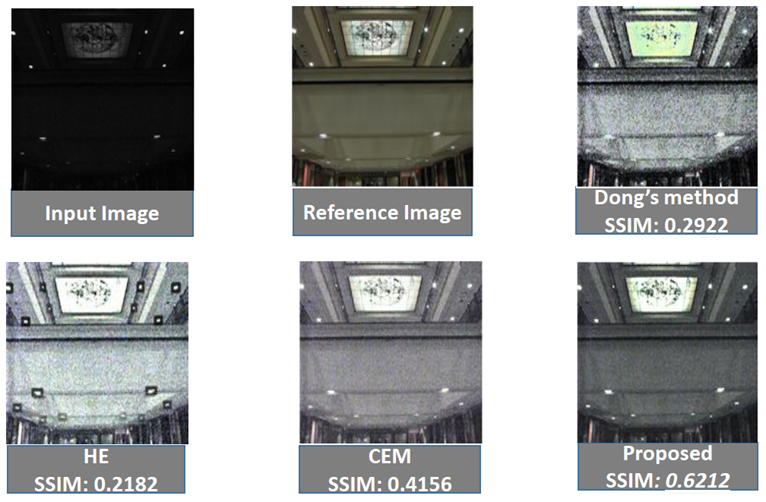High Dynamic Range Imaging |
|
Depending on the configuration of the camera and the lighting conditions, some regions of the captured image may be under-exposed and exhibit noise-like characteristics, while other regions may be over-exposed leading to information loss due to saturation. High Dynamic Range imaging (HDR) employ specialized techniques, such as exposure bracketing, in order to produce higher quality and dynamic range images. We explored a novel approach in HDR imaging that significantly reduces the necessary number of images by employing a random exposure mechanism where each pixel of a single frame collects light for a random amount of time (exposure). By collecting a small number of such images, the full sequence of low dynamic range images can be reconstructed and subsequently used for HDR generation by casting the reconstruction of the sequence as a nuclear norm minimization problem following the premises of the Matrix Completion theory. |
|
ORION members involved: Grigorios Tsagkatakis and Panagiotis Tsakalides [12] |
|
Low Light Image Enhancement via Sparse Representations |
|
Enhancing the quality of low light images is a critical processing function both from an aesthetics and an information extraction point of view. While images captured during day-time exhibit higher dynamic range, better quality and can be useful for extracting contextual information, night-time images are characterized by low intensities and usually suffer from the existence of severe noise. We developed a novel approach for enhancing images captured under low illumination conditions based on the mathematical framework of Sparse Representations (SR). To approximate the generation of low and high illumination image pairs, we generated the day dictionary from patches taken from well exposed images, while the night dictionary is created by extracting appropriate features from under exposed image patches. Experimental results suggest that the proposed scheme is able to accurately estimate a well illuminated image given a low-illumination version. |
|
ORION members involved: Konstantina Fotiadou, Grigorios Tsagkatakis and Panagiotis Tsakalides [26] |
|
Compressed Sensing for Remote Imaging in Aerial and Terrestrial Surveillance
ACHIEVEMENTS


